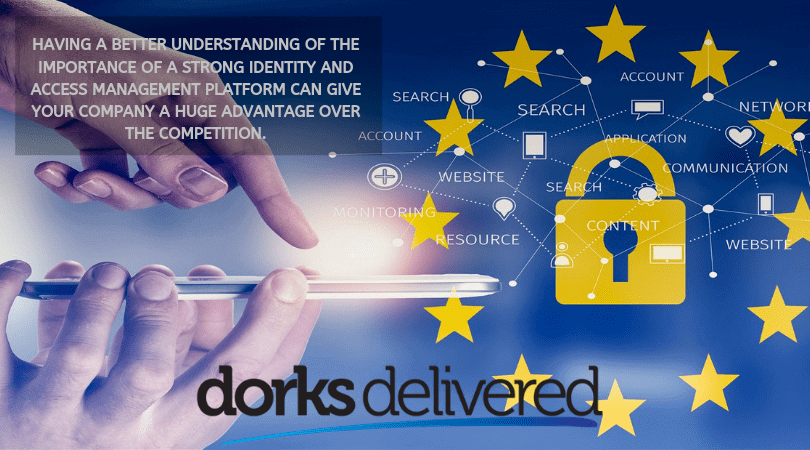Is Your Company Safe from Cyberattacks?
Cybercrimes are everywhere, and even if you are in Australia, you are not safe from them. They can come in a variety of forms: phishing, hacking, identity theft, and more. Moreover, attackers tend to be more interested in targeting small businesses that they assume have no strong identity and access management (IAM) strategy in place. This is why it is essential for businesses, no matter how big or small, to adopt a security and IT management process.
Identity and Access Management: A Necessity for Businesses
Your business’ security should be a top priority, and for you to make sure that the identity of each of your employees is protected, it only makes sense that you invest in IAM implementation. But what exactly is identity and access management, and what does this process entail? Identity and access management—or IAM—is a set of technologies and policies that you can put into place to provide the members of your company with appropriate access to data, technology, and other resources. IAM is an important part of the various security efforts that any company must put into motion to make sure that access to important company resources is only made available to the right set of people. These IAM systems that you put in place will be used to authenticate and authorize individuals in your company when it comes to accessing business resources as well as the hardware and software your employees will be using for their work. IAM has become more rigorous nowadays as it ensures that only those with the right permissions can gain access to certain resources or sectors of your company. In fact, if you are thinking about implementing the most up-to-date IAM solutions, here are four trends that you might want to be more familiar with when it comes to identity and access management.

End-User Authentication Technologies
Nowadays, the means of authenticating end users has become stricter than ever. In fact, there are now different means of identifying and authorizing users who try to access certain programs and resources. Here are four of the most common authentication technologies:
- Multi-factor. This requires users to authenticate their identities using more than one method. It has multiple sign-in options available other than their password, such as a PIN, fingerprint or facial recognition.
- Certificate-based. This process allows a user to securely access a server in exchange for a digital certificate instead of a username and password. This process helps prevent keystroke logging, phishing, and other common problems that a user may encounter when using a password-based authentication method.
- Biometrics. This type of user authentication can range from using a registered fingerprint or palmprint to identifying through retinal scans or voice recognition. This process makes use of a person’s biological and behavioral traits, and it is a stronger form of identification because a person’s biometric traits can’t be easily shared, duplicated, or lost.
- E-tokens. These are small devices that generate a new random value every time they are used. This random value then becomes a basis for authentication, which is a more secure alternative to passwords. It can be executed using a USB key fob or smart card, wherein the data remains well-protected.
You May Also Like:
• 8 Most Common Types of Cyberattacks You Need to Know
• Better Information Security for Accommodation Websites
• Challenges and Trends in Cyber Security – What to Expect in 2019
IAM and UEM Convergence
Unified endpoint management (UEM) is the means of controlling and securing devices in a connected, cohesive manner from a single console. It mainly relies on the mobile device management (MDM) applications in desktop and mobile operating systems. Many UEM vendors such as Microsoft, Citrix, and VMWare are now integrating identity and access management as part of their UEM technologies. Large businesses are now expected to have these security measures in place to guarantee that no unauthorized personnel get access to any set of resources. Through IT consulting services, a company can gain more insights on the integration features of their current UEM tools and learn how to fill in security gaps with IAM technology. UEMs with IAM platforms make it easier for IT admins to manage security and access company devices, since they will only need to use UEM consoles. Without this key integration feature, your company’s IT pros will need to use two separate platforms.
Microservices and Machine Learning Capabilities
To enable a more accessible, seamless, and automated IAM solution for users and businesses, new technologies are making their way into identity and access management tools. These include machine learning and microservices. Microservices provide more versatility in terms of IAM implementation since they can run in a self-contained mode and do not require an embedded OS. By incorporating machine learning, IAM tools can now analyze a user’s behavior, make predictions, or better yet, detect anomalies. This emerging trend is still on its early stage, but it is something that many businesses can look forward to when it comes to managing their security.
Migration to Cloud-Based IAM
With managed security services becoming a growing trend, the option to run IAM programs through the cloud is gaining traction. In fact, most managed service providers are now offering this service as part of their managed service packages. Some of the largest cloud providers, such as Google and Amazon, even have identity and access management tools integrated into their cloud services. These are usually included in a cloud subscription in order to help organizations secure their data and applications, which are normally stored and run in the cloud.
The Final Word
Having a better understanding of the importance of a strong identity and access management platform can give your company a huge advantage over the competition. By proactively securing your business resources, you get to avoid the hassles of resolving any cyberattacks that may jeopardize your operations, or worse, your company’s identity. If you need help with figuring out how to go about your company’s IAM implementation needs, sign up.




























